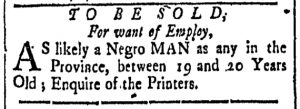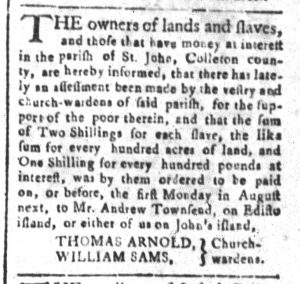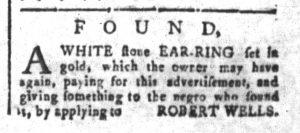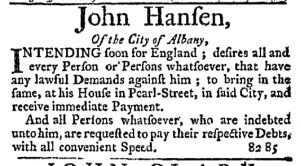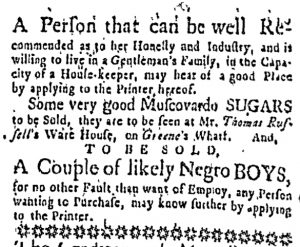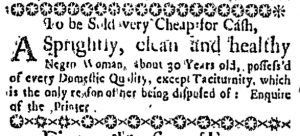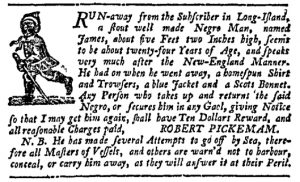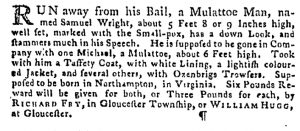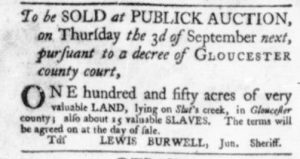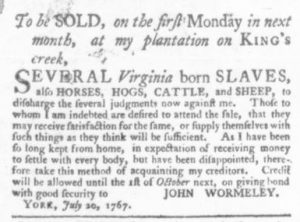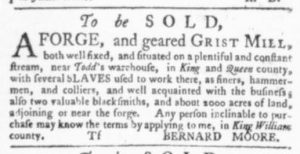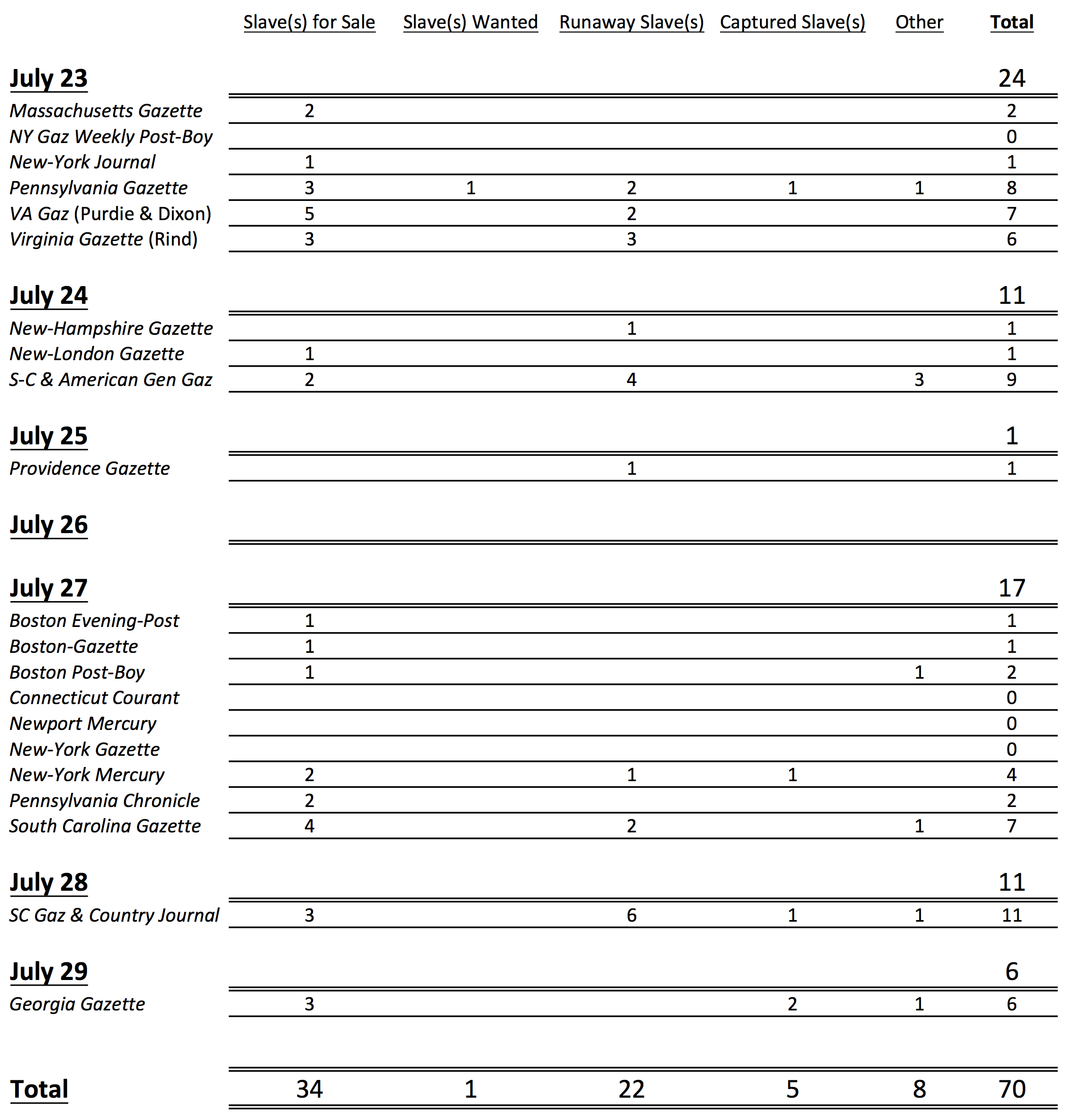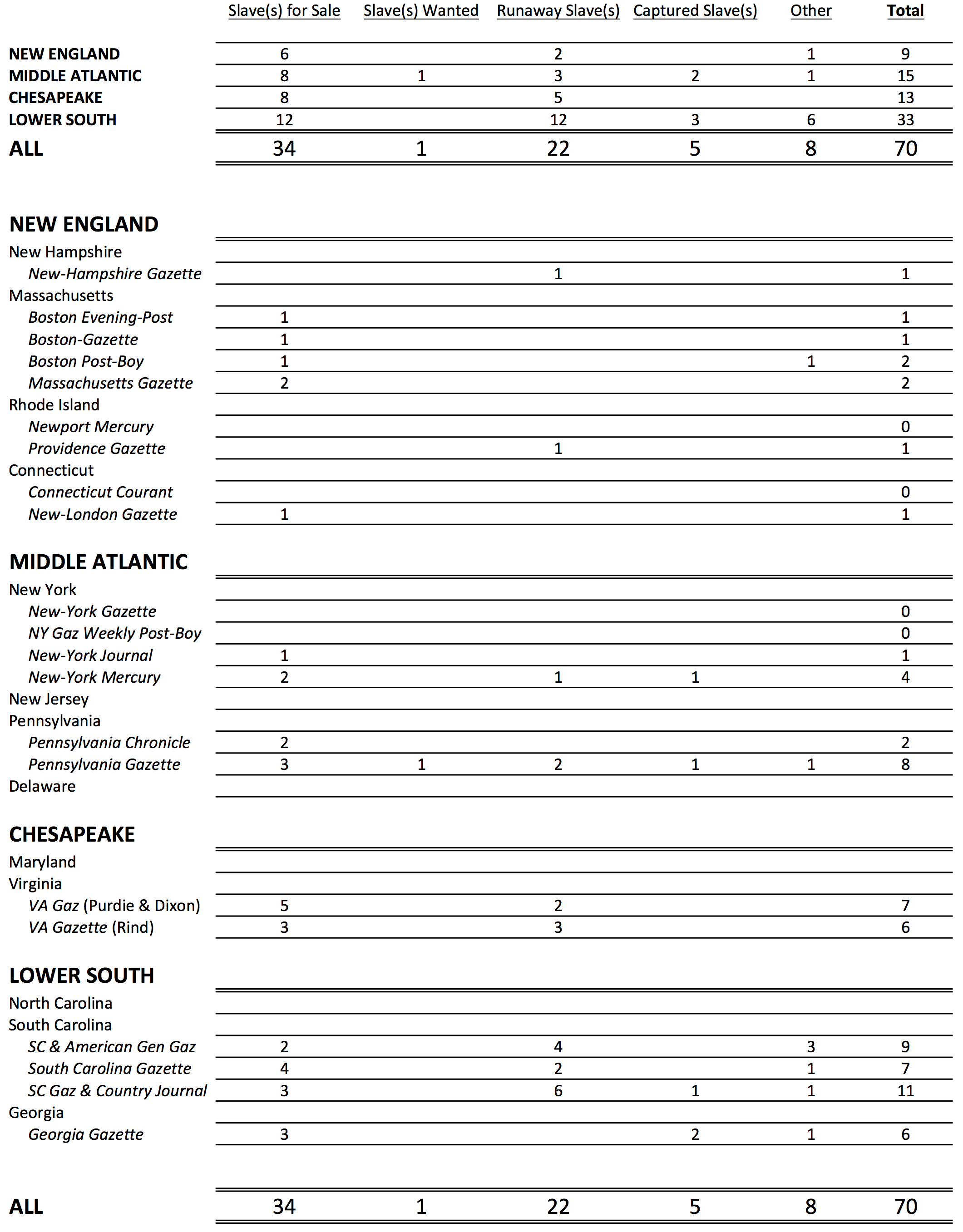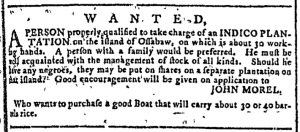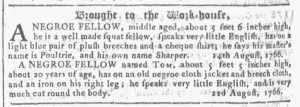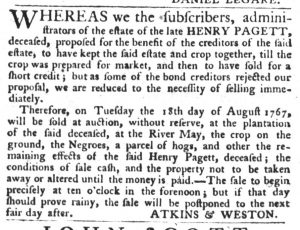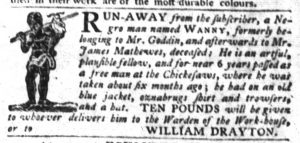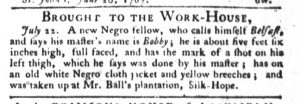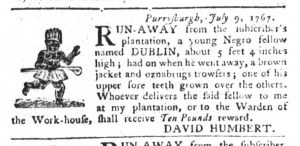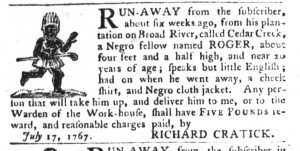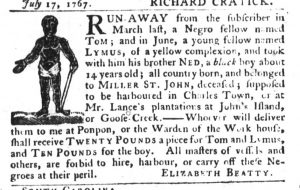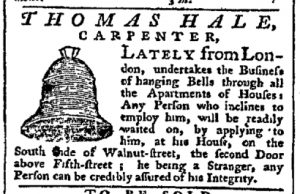What was advertised in a colonial American newspaper 250 years ago today?

“Intending to carry on my former Business …”
Charles Jeffery had been away from New London for a while, having left “to settle sundry Accounts of long standing,” but, “having almost compleated the same,” he was back and ready to resume the business he had allowed to lapse during his absence. To make sure that “all good old Customers” knew of his return, he placed an advertisement in the New-London Gazette.
Jeffery reminded readers of the various branches of the business he formerly pursued: “Butchery,—Baking Loaf and Ship Bread,—Butter Bisket, Tallow-Chandling;—Also brewing SHIP BEER, &c. &c. &c.” He did not elaborate on the goods he offered for sale, neglecting to make any of the common appeals to price or quality. He did, however, make a nod toward the sort of customer service that readers could expect; they could “depend on being used in the neatest and best manner, by their humble Servant.” He aimed this promise directly at “all good old Customers.”
Despite the hiatus in his business, Jeffery anticipated that readers of the New-London Gazette were sufficiently familiar with him and the commodities he sold that he did not need to do much by way of attempting to convince them to resume trading with him. In that regard, his advertisement resorted more to announcing his enterprise instead of marketing it. He did not even seem particularly interested in attracting new customers but rather desired to revive relationships with former associates, those “good old Customers” who made purchases from him in the past.
Jeffery may have felt little need to engage in much marketing, perhaps assuming that he had already achieved prominence and a positive reputation among residents of New London and its hinterland. In addition, he likely faced less competition than his counterparts in larger port cities, like Boston, Charleston, New York, and Philadelphia. Had he temporarily suspended business in any of those locales, he may very well have posted a rather different sort of advertisement when he sought to return to the marketplace.


